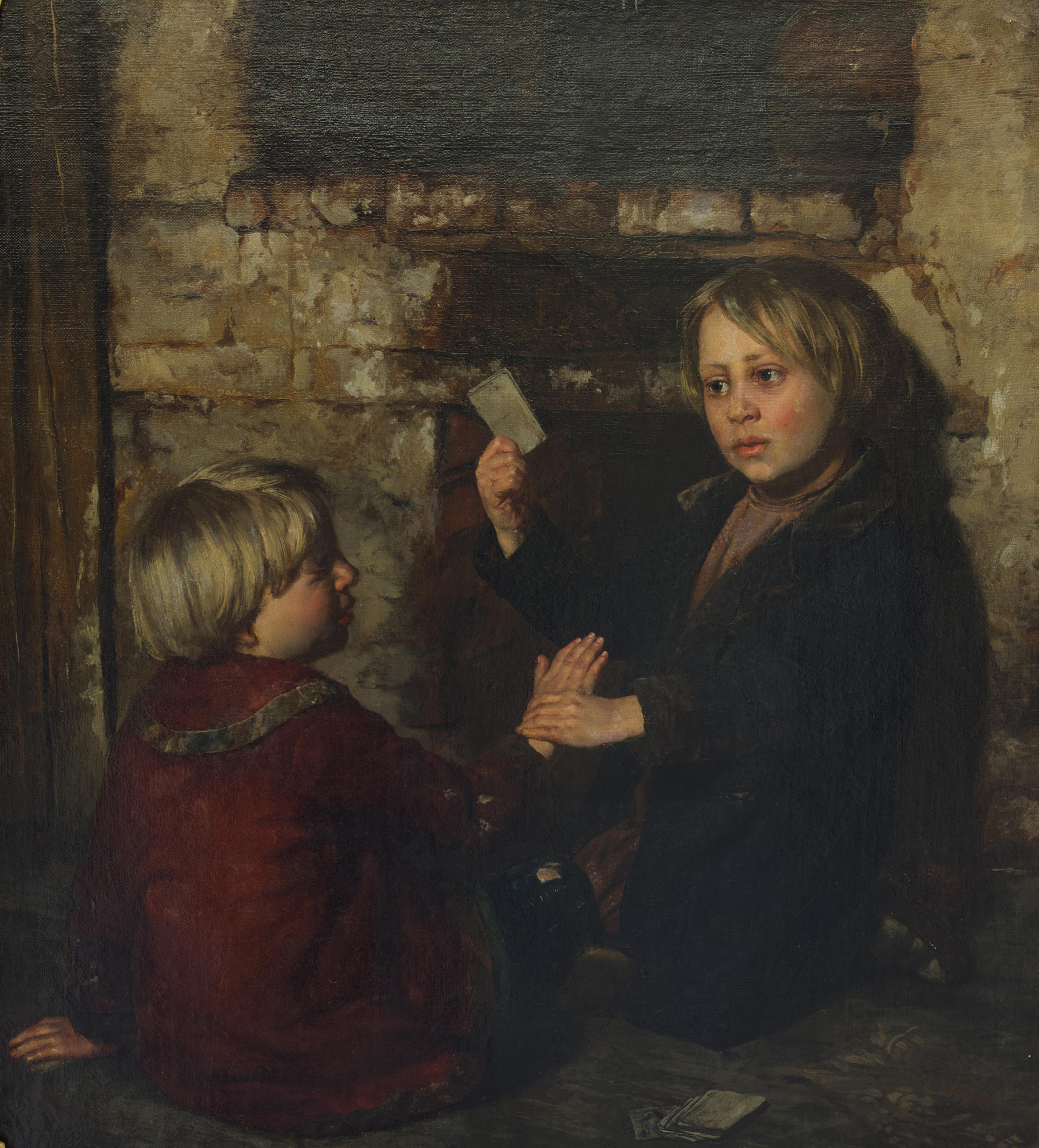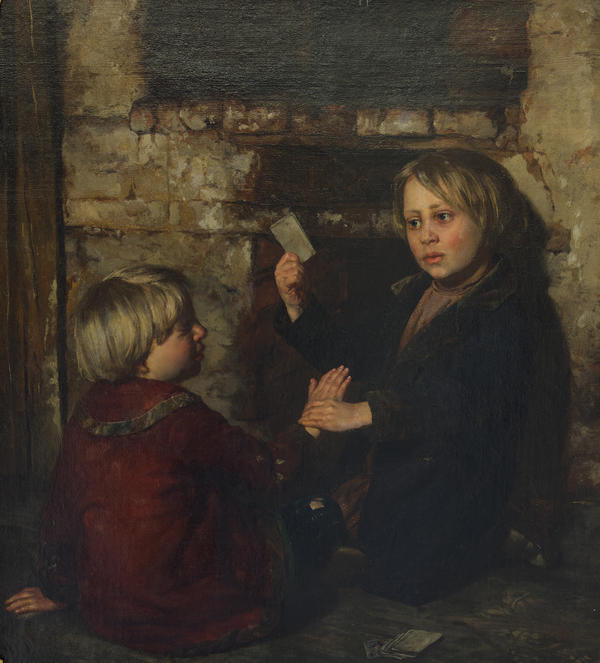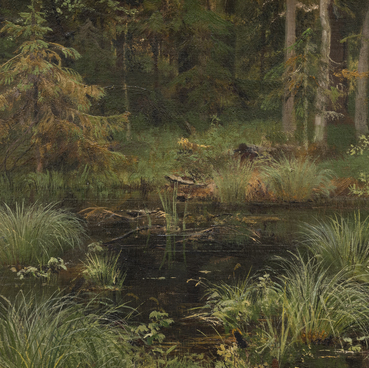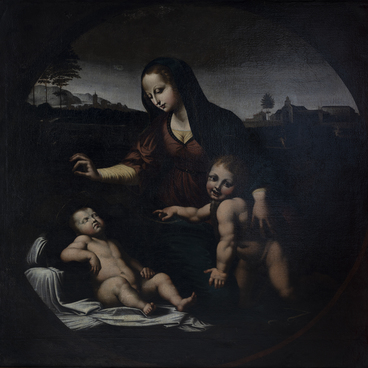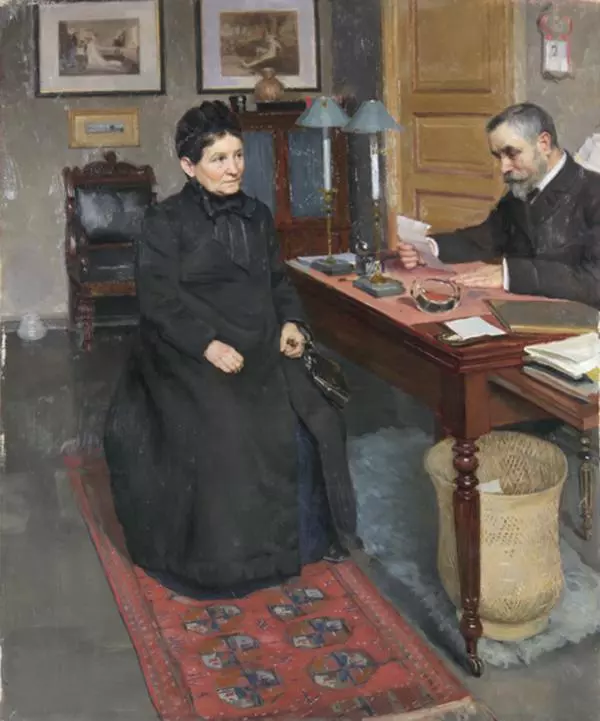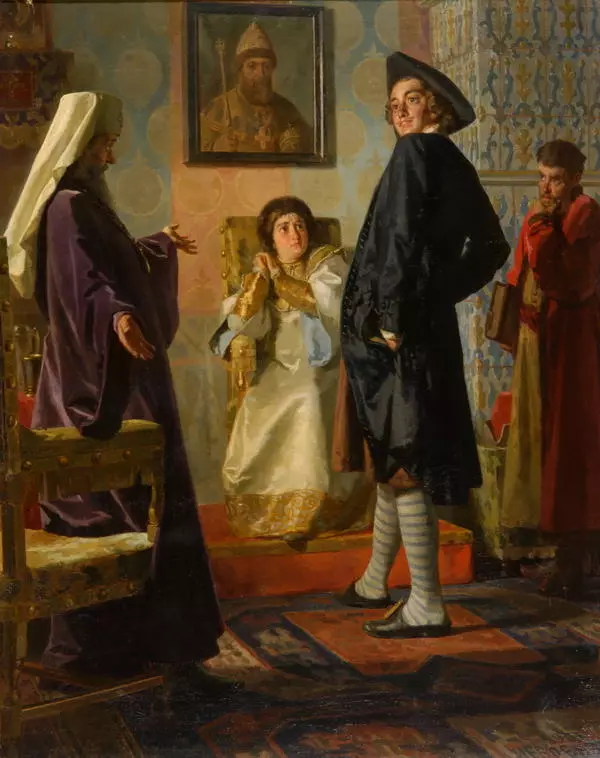The picture Boys playing cards from the collection of the Tyumen Museum and Educational Society was painted by the Russian artist Nikolai Vasilyevich Nevrev. He achieved victories and fell into oblivion; he tried himself in different genres including portrait art, genre painting, and history painting, and, finally, died tragically. According to some researchers, in portrait art Nikolai Nevrev was on a par with his famous contemporary Sergei Zaryanko. But the young artist became famous due to his genre paintings with a strong social message, e.g., Bargaining. From the recent past, 1866, Archdeacon proclaiming longevity at the merchant’s birthday party, 1866, and The ward, 1867. The most popular picture was Bargaining that gained the first prize of the Society of Art Lovers. It was exhibited at the Academic and All-Russian exhibitions in Moscow, and then Pavel Tretyakov bought it for his gallery.
The picture was painted after the abolition of serfdom and represented a scene “from the recent past”, i.e., bargaining in a landowner’s house. The owner, an educated person and a fan of painting, literature, and aspirations for freedom (as evidenced by the books and paintings that include an engraving by Mirabeau, one of the leaders of the French Revolution), discusses with another landowner, probably, his neighbor, the terms of sale of a young peasant woman. Due to ‘acute’ subjects and artistic expression Nevrev was second after the wrathful exposer of social stigmas Vasily Perov.
The picture Boys playing cards by Nikolai Nevrev was also painted in the 1860’s. It is characterized by a critical focus that is revealed both in the subject and certain picture details. The boys are painted carefully and with love, but their child purity is opposed to what they are doing and the environment of a dirty house with a smoky stove. Nevrev is one of those painters, who passed from poetic realism to critical realism. Poetic realism offered an image of a high-minded, wise, and ideal peasant as Alexei Venetsianov did. Critical realism keeps this idea, but includes an active form of protest and the artist’s anger caused by a deformation of a beautiful life, as well as sympathy for a person devastated by this life.
The picture was painted after the abolition of serfdom and represented a scene “from the recent past”, i.e., bargaining in a landowner’s house. The owner, an educated person and a fan of painting, literature, and aspirations for freedom (as evidenced by the books and paintings that include an engraving by Mirabeau, one of the leaders of the French Revolution), discusses with another landowner, probably, his neighbor, the terms of sale of a young peasant woman. Due to ‘acute’ subjects and artistic expression Nevrev was second after the wrathful exposer of social stigmas Vasily Perov.
The picture Boys playing cards by Nikolai Nevrev was also painted in the 1860’s. It is characterized by a critical focus that is revealed both in the subject and certain picture details. The boys are painted carefully and with love, but their child purity is opposed to what they are doing and the environment of a dirty house with a smoky stove. Nevrev is one of those painters, who passed from poetic realism to critical realism. Poetic realism offered an image of a high-minded, wise, and ideal peasant as Alexei Venetsianov did. Critical realism keeps this idea, but includes an active form of protest and the artist’s anger caused by a deformation of a beautiful life, as well as sympathy for a person devastated by this life.
